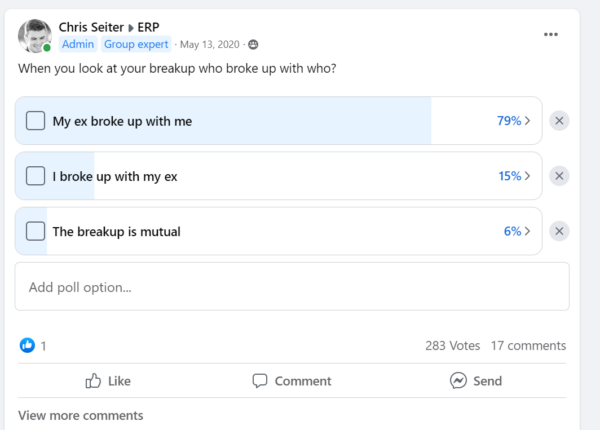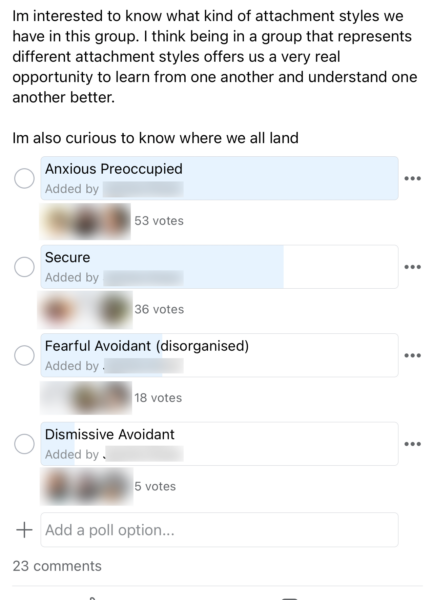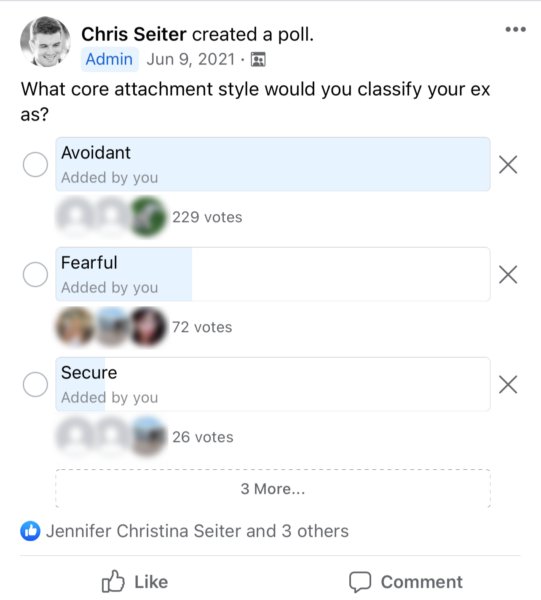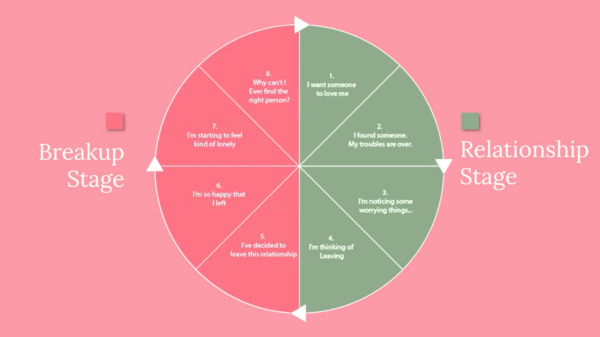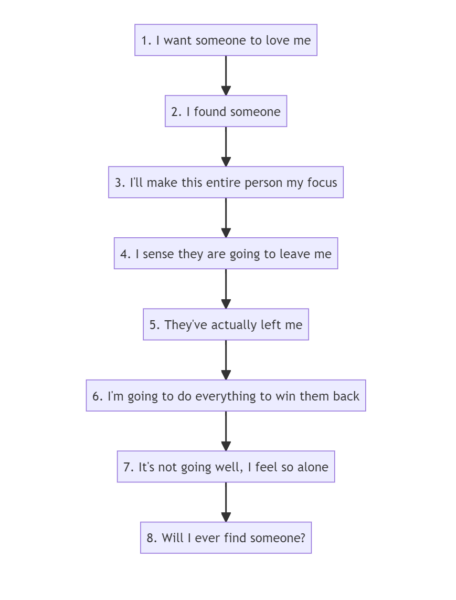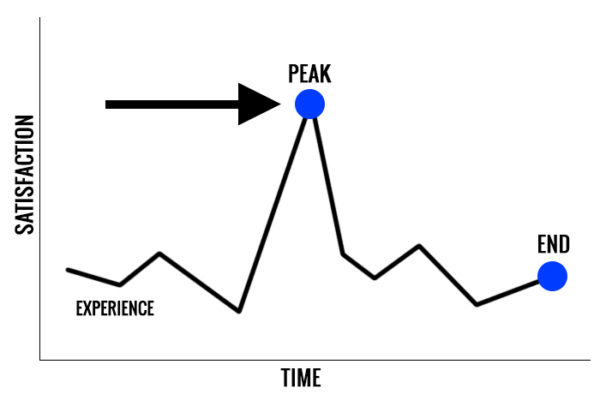Today I’m going to take an in-depth look at how the dumper feels when the dumpee has moved on.
I’m going to be covering things like,
Why (even though you’ll hate this) attachment styles are so important to understand
- The most common dumper and dumpee attachment pairing
- Understanding how the dumper actually feels
- The two death wheels
- The concept of nostalgic reverie
- If you can ever expect the dumper to reach out to you
Ready to learn about dumpers and dumpees?

What Are Your Chances of Getting Your Ex Boyfriend Back?
Take the quizThe Most Common Dumper And Dumper Attachment Pairing
I will say that a lot of our in-house data is skewed; we’re often only hearing from dumpees:
Literally to the tune of like 80%.
Of course, not every breakup is like what I’m about to suggest. So, take everything I’m about to say with a grain of salt but when we’ve actually polled our audience, we found that the dumper and the dumpee have two clear attachment styles.
Most of our clients, the dumpees, exhibit what is referred to as the anxious attachment style.
This style is essentially defined by a fear of loss.
They’re so afraid of being abandoned that they often operate in ways to try to prevent that from happening, or once it has happened, as in the case of breakups, they work to repair it.
This is the anxious attachment style. It’s why you often see individuals with the anxious attachment style:
- Begging for their exes back
- Trying to control their exes
- Being completely codependent on the relationship
- Lacking discipline
- Experiencing an excessive amount of anxiety
- Grieving for longer than is normal.
Sound familiar?
On the other hand, the typical dumper, that we often study here at Ex-Boyfriend Recovery, exhibits what’s called avoidant tendencies.
Their core issue primarily revolves around a fear of losing independence.
Any threat to their independence can cause an avoidant dumper to bail or avoid.
I often discuss these concepts of triggers and dismissive avoidance, noting how if you’re trying to advance the relationship and gain a greater commitment, these can be trigger points that may freak your ex out.
Examples include:
Discussing moving in together
Having children
Talking about getting married.

What Are Your Chances of Getting Your Ex Boyfriend Back?
Take the quizBasically Any perceived threat to their independence can cause them to bail or avoid.
So, as you can imagine, the common pairing we see is that the dumpee tends to be anxious and the dumper tends to be avoidant.
Remember this because it’ll be super relevant to something I’m going to talk about later.
But How Does The Dumper Feel When The Dumpee Actually Moves On?
There’s a natural assumption that most dumpers make about dumpees.
Given that most of the dumpees we’ve studied tend to have anxious attachment styles, it means that the avoidant dumper will often assume, “they want me back.”
This hypothesis is supported by the fact that the anxious individual has often tried to win them back in very direct ways, which of course only pushes the avoidant further away.
When a dumpee starts to move on, it creates a stark contrast from the norm.
As I mentioned, the avoidant has many preconceived notions about the dumpee. But when the dumpee moves on, it shifts the paradigm and creates an interesting snowball effect.
The Two Death Wheels
In my opinion, to answer how a dumper feels when a dumpee moves on, you need to examine the diagrams I’ve created concerning the ‘death wheels’.
I’m well-known for creating what’s called the ‘avoidant death wheel’.
The avoidant death wheel is something I’ve developed to describe the avoidant life cycle from the beginning of a relationship to the end, and then to the start of a new relationship, showcasing the cycle they’re caught in.
There are eight stages to it.
- Stage one is their desire for someone to love them.
- Stage two is when they find someone and believe all their troubles are over.
- Stage three, they start noticing some concerning traits about that person.
- Stage four, they contemplate leaving.
- Stage five, they decide to end the relationship.
- Stage six, they’re elated about leaving.
- Stage seven, they start feeling a bit lonely.
- Stage eight, they experience depression and ask, “Why is this always happening to me?”
Then we circle back to stage one, and they repeat this cycle from relationship to relationship. This cycle often plays out in on-again, off-again relationships.
Interestingly, a couple of weeks back, I created a second death wheel, the ‘death wheel of the anxious person’.
You can superimpose these two death wheels and examine their correlation and alignment.
The anxious death wheel also has eight stages.
- Like the avoidant death wheel, it begins with the need for love.
- And the belief that finding someone solves all troubles.
- However, it starts to differ at stage three when the anxious person becomes completely codependent, focusing entirely on their partner. Interestingly, if you correlate this with the avoidant death wheel, you’ll notice that this is when the avoidant begins to see red flags. This makes sense, as anything that threatens the avoidant’s independence triggers them. The anxious person’s intense focus is a definite threat to the avoidant’s independence.
- Stage four for the anxious death wheel is when they start sensing their partner’s withdrawal and fear they will leave.
- Stage five is when they are actually left.
- Stage six is their desperate attempt to win their ex back.
- Stage seven is the realization that things aren’t going well, leading to feelings of loneliness.
- Stage eight sees them wondering if they’ll ever find someone else. They get caught in a loop of constantly jumping from relationship to relationship, trying to fill the void, or returning to their ex without being able to move on.
Understanding this is crucial as these represent the two traditional post-breakup feelings.
You have the avoidant’s perspective of a breakup and the anxious person’s perspective of a breakup.
However, when you start moving on, something very interesting happens, especially for an avoidant.
The Importance Of Nostalgic Reverie
The understanding of this phenomenon really revolves around the concept of ‘nostalgic reverie’.
A couple of years ago, I created a YouTube video that garnered hundreds of thousands of views. It was designed to instruct people on how to make an avoidant ex miss them, and one of the significant concepts we introduced was ‘nostalgic reverie’.

What Are Your Chances of Getting Your Ex Boyfriend Back?
Take the quizThere’s a valuable resource for understanding avoidants, Free To Attach,
Which posits that avoidants are free to long for an ex once that person becomes unavailable – typically out of a relationship and out of contact. This way, their engagement and deactivation systems aren’t triggered.
Essentially, if you, the dumpee with an anxious attachment style, move on from your ex, it allows the avoidant to lower their defenses.
They no longer view you as a threat to their independence but begin to romanticize you. This is when they start to feel nostalgia.
Interestingly, they often derive a perverse enjoyment from this process.
According to Free To Attach,
An ex being truly unavailable produces this enjoyment because they’re at liberty to fully miss and wistfully think of them. However, it also confirms their belief that people won’t stick around for them, even though they are usually the ones who initiate breakups.
In my opinion, this is how the avoidant feels after you move on.
They derive pleasure from missing you and reminiscing about your shared moments.
But this raises another question: Will they reach out to you?
Will An Avoidant Reach Out To You?
We know that once the nostalgic reverie kicks in, it lowers their defenses and they start reminiscing about the good times, focusing on peak positive moments.
But do they act on these feelings?
I believe they do, but not in the ways you might expect.
We’ve noticed that avoidants initially reach out in very indirect ways. We usually advise people to expect light and non-emotional contact from them.
Common examples include:
- Noticing that they’re viewing your Instagram stories
- Liking your social media posts
- Commenting on a post
Notice how these are all indirect forms of communication.
These are often signs that the nostalgic reverie is at play.
However, if you want to rekindle things with them or even establish a friendship, you will likely have to be the one to initiate direct contact.
If not timed correctly, they might retreat.
They might just view an Instagram story or like a comment without it indicating genuine interest – these could be false positives.
So, there are three things to look for before you consider reaching out.
- First, you must appear to have moved on in public consciousness – perhaps you’ve started dating others, or enough time has passed.
- Second, they must have begun to reach out to you in these indirect ways.
- And third, you need to identify a pattern. One instance of indirect contact doesn’t constitute a pattern. Constant indirect interaction indicates they’re in the middle of this ‘perverse enjoyment’, missing you and romanticizing the past.
This is when they’re most likely to respond receptively if you attempt to reach out.
Conclusion
In short, if you’re wondering how a dumper feels when the dumpee moves on, they appreciate it because it grants them the freedom to reminisce about the good times you shared.

What Are Your Chances of Getting Your Ex Boyfriend Back?
Take the quizHowever, this doesn’t necessarily mean they’ll act on these feelings.
If you want them to act, you will often have to initiate the process yourself.
